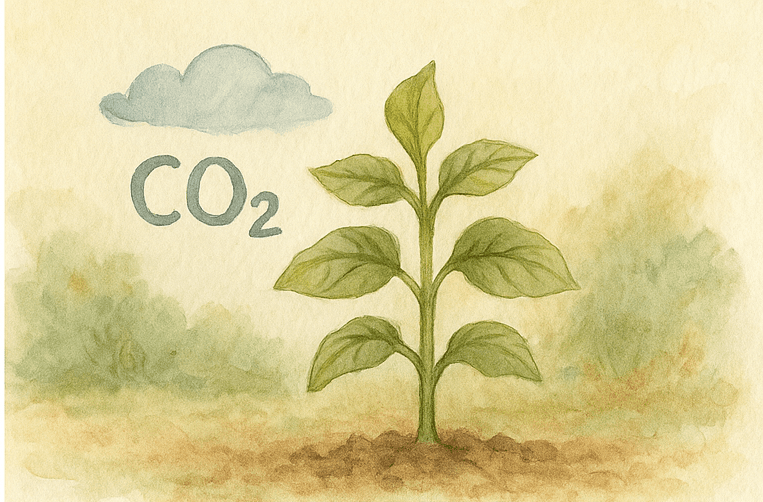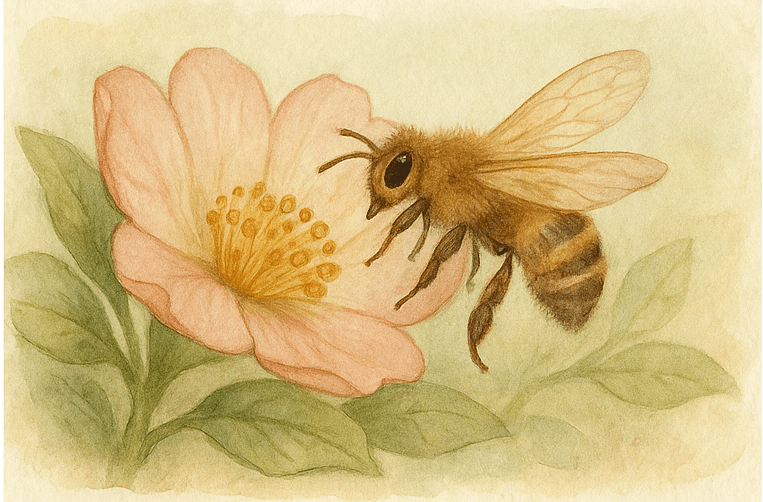The Quiet Magic of Seeds (and Why Plants Feel Like Wizards)
There’s a moment every gardener knows: you slip a tiny, forgettable seed into the soil… and weeks later you’re staring at a whole living plant. Leaves, stems, roots, architecture, personality — all from something smaller than a fingernail.
No matter how many times I watch it happen, it still feels like cheating. Or magic. Or both.
Plants Grow Out of Thin Air — Literally
Here’s the wild part: almost none of a plant’s mass comes from the soil.
Not from the compost.
Not from the fertilizer.
Not from the mysterious “nutrients” we imagine are floating around down there.
Plants build themselves out of air.
They pull carbon dioxide out of the atmosphere, rearrange the carbon, and turn it into the solid stuff we see — trunks, branches, leaves, fruit, even giant trees. Soil is mostly just a workspace and a pantry; the raw building material comes from the sky.
Once you really grasp that, gardening starts to feel like wizardry.

Seeds Know Exactly What to Do
Inside every seed is a full blueprint for life — when to sprout, how deep to push the roots, what direction to grow toward the sun. And somehow, they execute this plan without a brain, eyes, or instructions taped to the inside of the seed coat.
Give them moisture and warmth, and they wake up as if from a long sleep:
“Right, time to send down roots.”
“Okay, now let’s push up and look for light.”
“Oh—spring? Perfect. Bloom time.”
It’s easy to forget how much intelligence is encoded in these tiny packets.

Plants Are Smarter Than We Think
We like to think of plants as passive — just sitting there being green. But they’re constantly sensing, reacting, and adapting.
Some of my favorite plant superpowers:
Plants that sense touch
Mimosa pudica (the “sensitive plant”) collapses its leaves instantly when touched — a kind of plant-level reflex.
Climbing plants can “feel” when they’ve grabbed a support. They’ll grow differently if they sense a nearby surface.
Plants that make sounds
This one blows people’s minds: some plants emit high-frequency “clicks” or vibrations, almost like ultrasonic whispers. Researchers think this may be a stress signal, or even a way of detecting water.
Flowers that flirt with pollinators
Flowers are evolutionary masterminds:
Some heat themselves up to lure cold bees.
Others shift color after pollination as a “don’t bother, I’m done” signal.
Some release fragrance only at night to attract moths.
A few mimic female insects to trick males into landing.
Once you start paying attention, it’s clear: plants are not passive. They’re active participants in the world, constantly communicating in ways we’re only beginning to understand.

The Magic and the Science
That’s what I love about gardening — it sits right in the overlap between magic and biology.
You can start with a handful of seeds, some potting soil, and a patch of sunlight…
and end up with an entire miniature ecosystem built from nothing but carbon, water, and the quiet intelligence of plants.
Every tomato, every fern unfurling, every bean tendril reaching out as if looking for a friend — it’s all a reminder that life is astonishing, clever, and still full of mystery.
And we get to nurture it.
Enjoying this post?
If you love the whimsy and want to support more PNW garden guides, you can buy me a coffee.
🌼 Buy Me a Coffee


